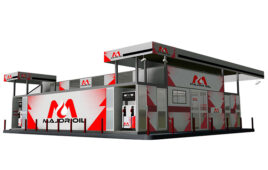With a void left by smokers who are foregoing cigarettes and e-cigarette users who aren’t convinced of their long-term stability, more U.S. tobacco consumers are embracing other tobacco products (OTP). As it has for the last few years, smokeless tobacco is driving sales in the OTP category as tobacco manufacturers find new ways to keep the smokeless segment fresh.
“Sales are definitely up,” said John Archer, owner of Shell Food Mart in Hinsdale, Ill. “People are definitely buying it, especially in the logs where you get five containers at a time. That’s happening more whereas it used to be they would buy just one canister at a time.”
Nielsen data cited by Wells Fargo Securities found smokeless tobacco sales registered the strongest showing in a year for the four-week period ending Jan. 23, 2016 with an 8.1% increase in dollar sales. Leading the category was Reynolds American’s Grizzly with an 11.1% bump in dollar sales, followed by Altria Group’s Copenhagen with a 10.7% increase in dollar sales.
IRI, a Chicago-based market research firm, reported that spitless tobacco outsold snuff in convenience stores in both in percentage of dollar sales—(19.24% versus 8.61%, respectively) and unit sales (12.87% versus 4.62%, respectively) for the 52 weeks ending Dec. 27, 2015.
Analysts pointed out increased revenues were driven by higher retail prices.
“The unit prices of smokeless tobacco grew by 3.5% in 2015 dollar terms (inflation adjusted), allowing for stronger total market value gains,” said Eric Penicka, research analyst for Euromonitor International.
MINTY GREEN
Archer attributed some of the success in his store to growing his inventory over the past year, including highlighting new flavors.
“Some catch on and do really well, and some sit until they go out of date. The main flavors, however, continue to be mint and wintergreen,” Penicka said.
He also credits improved displays for greater visibility. “Altria put in a whole new section for Copenhagen and Skoal. It’s a three-shelf section with a lighted sign and spring-loaded trays,” Archer said. “That made everything look a million times better. Other companies come in with temporary displays, but we don’t do a whole lot with those.”
Based on current market conditions and feedback from retailers, Wells Fargo projects the category to gain even more ground in 2016. In fact, it’s forecasting a 3.5% increase in volume.
However, Penicka cautions convenience store owners and operators against banking on continued long-term gains, going forward.
“Smokeless tobacco has felt the most intense competition from the e-cigarettes market, which is encroaching on its potential as a substitute to cigarettes,” Penicka said. “ As the sensation of using vapor devices more closely mimics that of cigarettes, some cigarette users have opted for vapor devices over smokeless tobacco as a form of nicotine delivery, [and] in the years to come, [it’ll be] chipping into the previously strong forecasted growth of smokeless tobacco.”
Additionally, cities are taking action to prohibit the sale of flavored tobacco or limiting locations where individuals can indulge in smokeless tobacco products. For example, last spring, the San Francisco City Council voted to ban chewing tobacco at all athletic venues in the city.
On the flip side, the U.S. Food and Drug Administration (FDA) in November 2015 cleared the first new tobacco products for the U.S. market, under a system authorized more than five years ago. The snus line from Swedish Match is the first to go through the FDA’s formal review pathway, opening the door for other snus manufacturers in the future.
Stay tuned to Convenience Store Decisions‘ March issue, where we delve into 38 in-store categories to identify emerging trends and garner retailer analysis to forecast what operators can expect for 2016 and beyond.




